What Is the Most Common Time for a Wedding to Start? Unveiling Ceremony Schedules
Deciding on a start time for your wedding is a significant detail that sets the stage for your entire day. The most common time for a wedding to begin can vary widely, often dictated by the type and style of the wedding, venue availability, and the couple’s preferences. Traditionally, late afternoon into early evening — around 4 to 6 p.m. — is a favored time for many couples. This time frame allows for a blend of afternoon warmth and the transition into a romantic evening celebration.
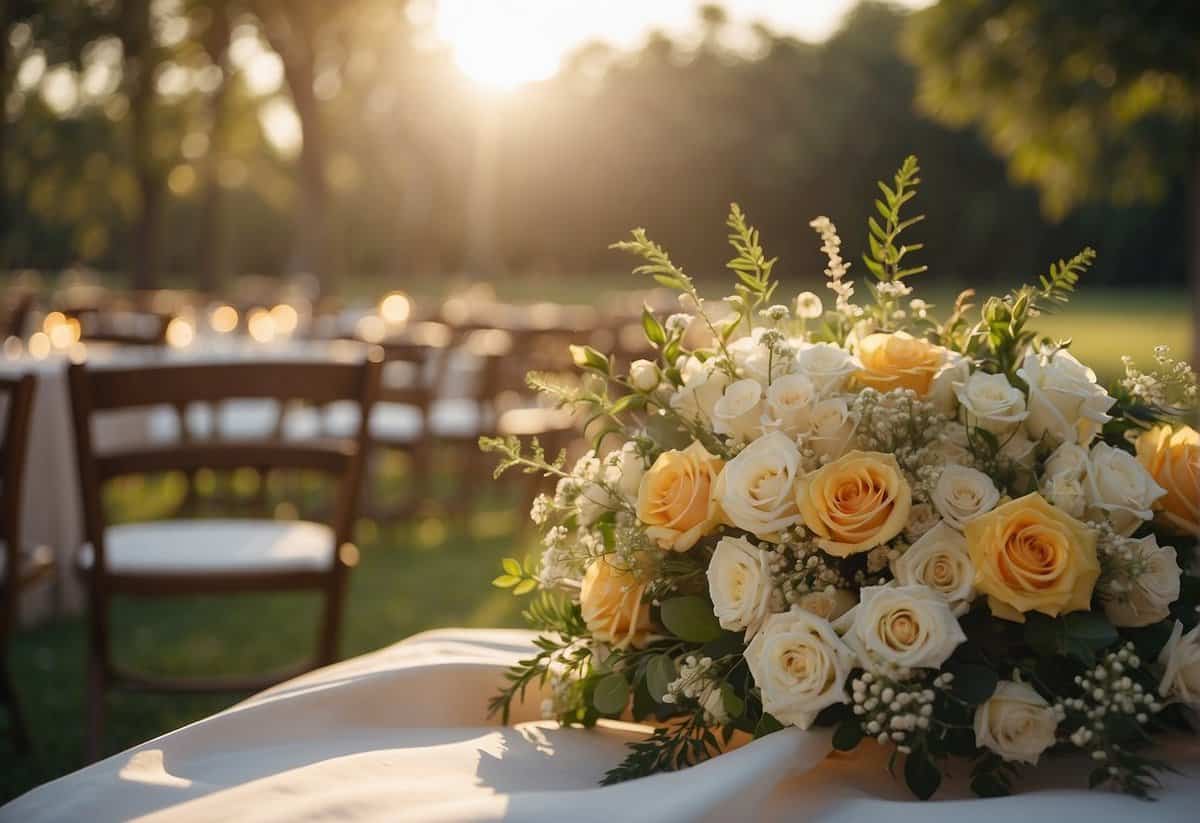
The chosen start time impacts various aspects of your wedding day. Early afternoon weddings often segue into evening receptions, giving guests plenty of time to celebrate. Season and location also play pivotal roles; for example, a wedding timeline during a warmer month might start later to avoid the heat. On the other hand, an earlier start may be preferred in the cooler months or if there are significant pre-wedding preparations to consider.
Key Takeaways
- The common wedding start time varies but typically ranges from late afternoon to early evening.
- Season, location, and personal preferences affect the decision for the ceremony’s start time.
- The start time sets the pace for pre-wedding preparations and the flow of the celebration.
Determining the Start Time
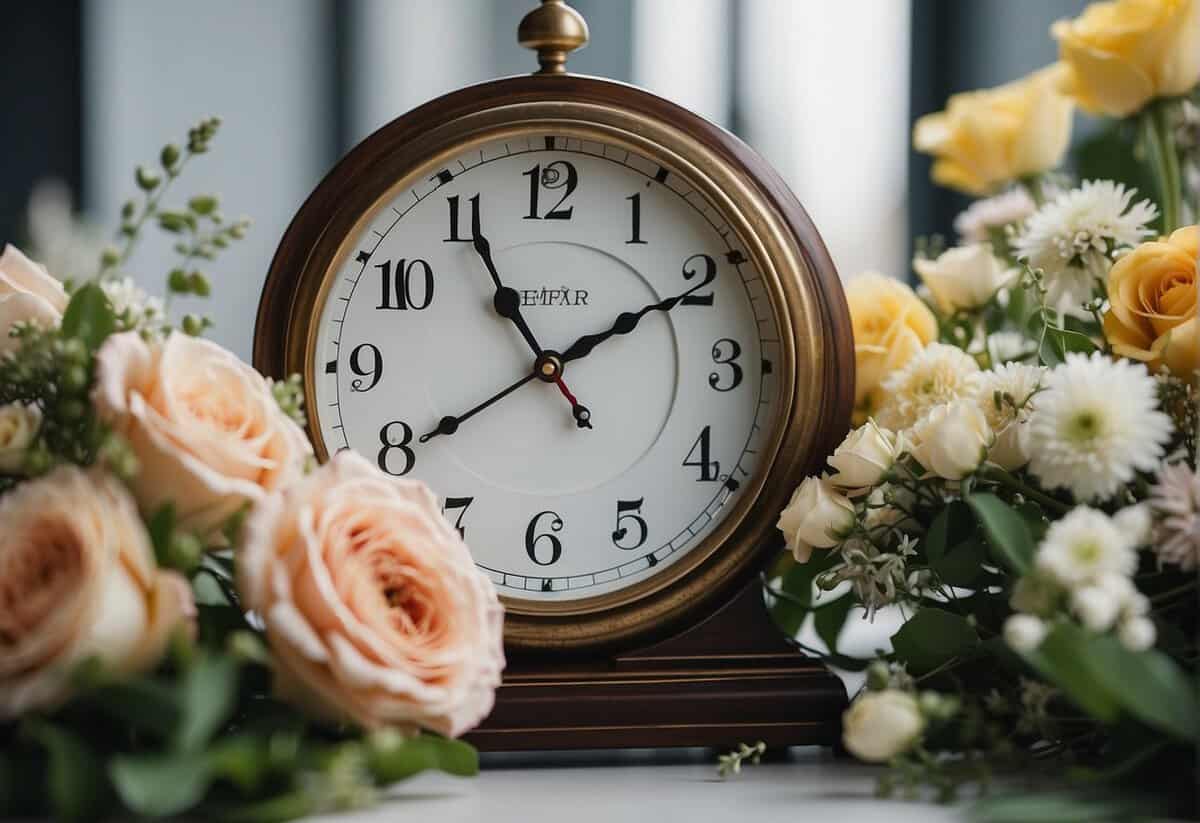
When planning your wedding, one key decision you’ll face is setting the time your ceremony begins. This can influence the flow and atmosphere of your entire day, from the vibe of your ceremony to the energy at your reception.
Ceremony Considerations
Your ceremony start time plays a crucial role in setting the pace for your day. Take into account the type of wedding ceremony you envision:
- Traditional religious ceremonies may have specific time requirements based on the venue or faith practices.
- Outdoor ceremonies benefit from natural lighting, so consider the time of sunset, especially if photography is a priority for you.
- Take note of event lengths, as some wedding ceremonies are longer than others, impacting the start time of subsequent events.
Hot Tip: Begin by deciding the style and length of your ceremony, then work backward to determine your start time.
Reception Planning
The flow from your ceremony to reception is seamless with the right timing:
- Aim for a smooth transition for guests. For instance, a sample wedding timeline suggests a gap between the ceremony and reception for a breather and venue setup.
- Consider early evening receptions to capitalize on the golden hour glow for photos before sunset.
- Remember that receptions often last a few hours, so an early start can mean an earlier end to your evening.
Remember: Factor in the length of the reception, guest comfort, and venue rules to pinpoint the perfect start time.
Pre-Wedding Preparations
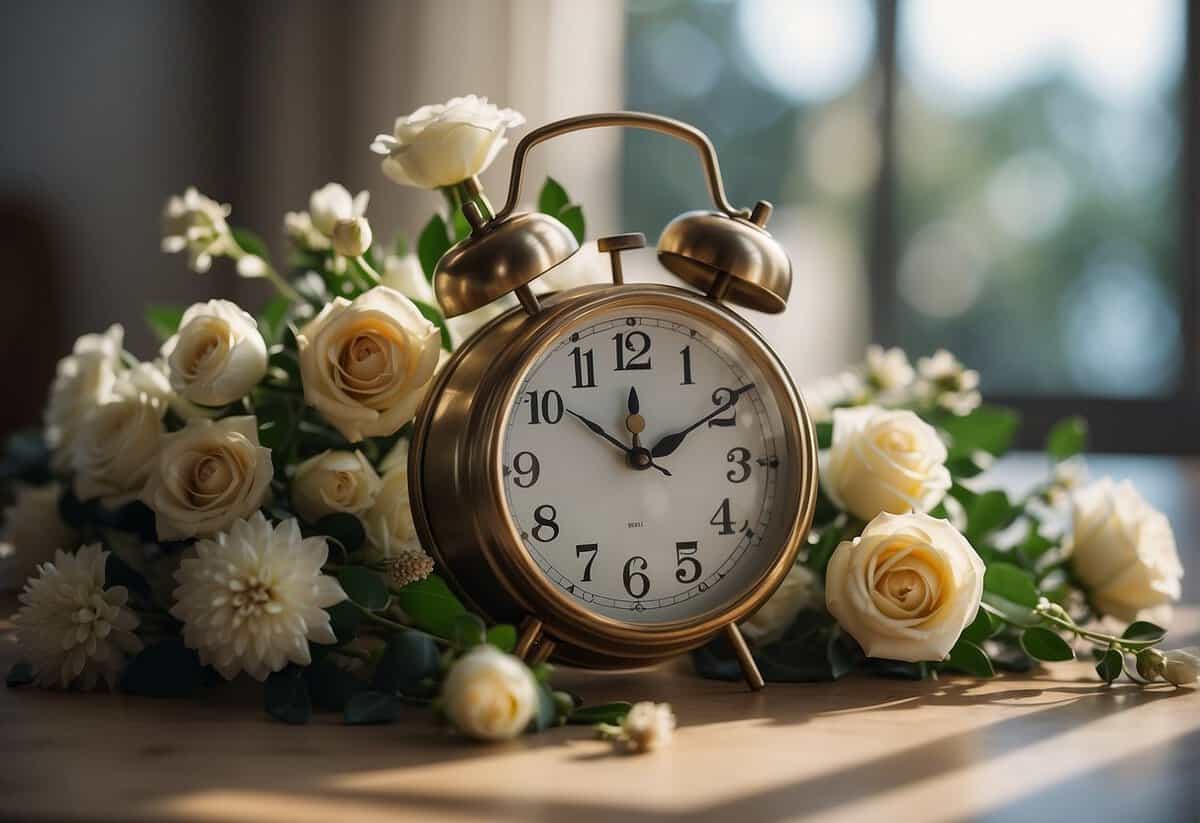
Before the ceremony begins, there’s a flurry of activity that sets the stage for your special day. From hair and makeup to capturing those first moments, it’s a time of anticipation and preparation.
Getting Ready
Your wedding day starts with hair and makeup—a process that can take a couple of hours, so it’s wise to start early. Professionals often recommend beginning 5 to 6 hours before the ceremony. You and your wedding party will likely be getting ready in the same location. Ensure there’s plenty of space for everyone to feel comfortable.
- Hair: Styles should reflect the overall theme of your wedding, for the bride, groom, and the wedding party.
- Makeup: Typically more dramatic than everyday wear to stand out in photos.
First Look and Portraits
If you’re choosing to have a first look—when you and your partner see each other before the ceremony for a private moment—it’s best to schedule it after getting ready and before guests arrive. This intimate event is followed by family portraits and bridal party photos. Here’s a suggested timeline for photography:
- First Look: 2-3 hours before the ceremony.
- Family Portraits: Immediately following the first look.
- Wedding Party: Photos can overlap with guest arrival.
Travel and Arrival
You’ll need to factor in travel time to the venue, especially if you’re getting ready off-site. Consider the following:
- If the travel involves heavy traffic or remote locations, add extra time.
- Plan for the wedding party to arrive at least 1 hour before the ceremony start time.
Remember: This is your day, so factor in some buffer time to ensure a smooth and stress-free transition to your ceremony.
Wedding Ceremony Essentials
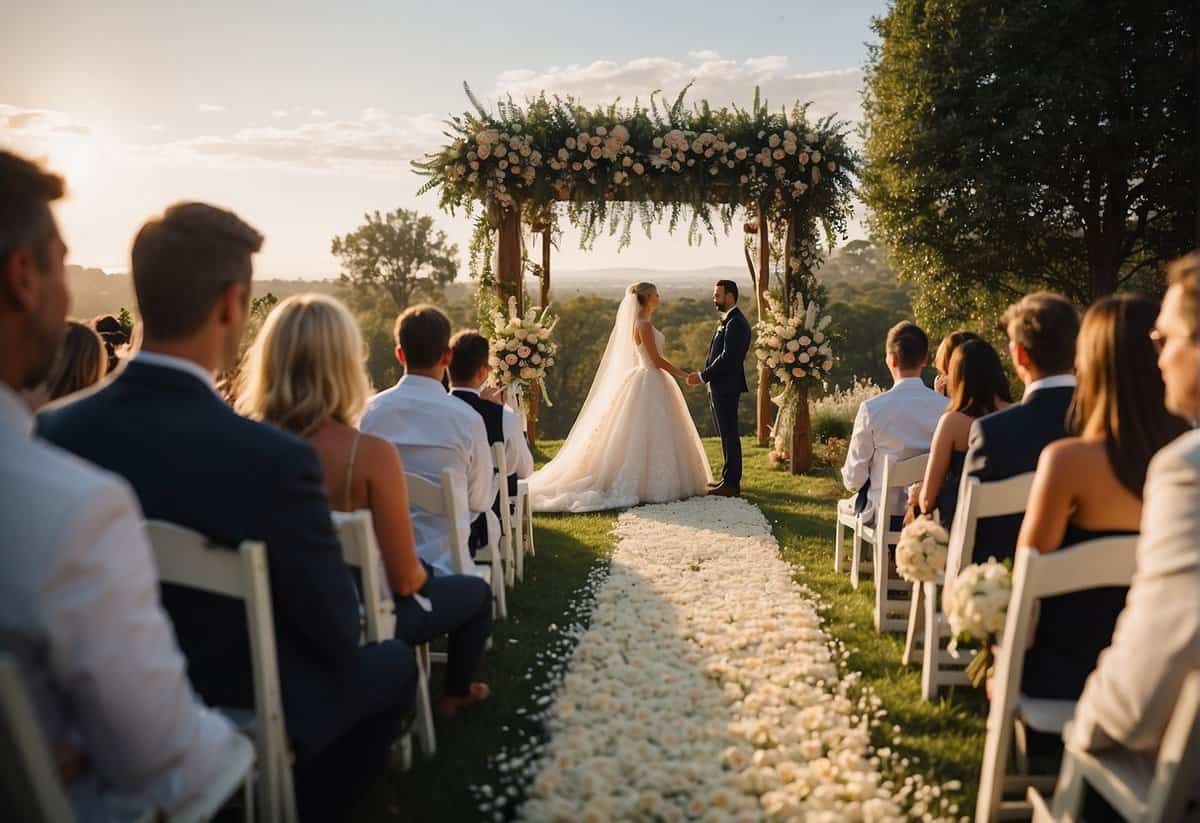
When you’re planning a wedding, understanding the essentials of your ceremony is crucial. This includes choosing the right venue, coordinating with vendors, and mapping out the sequence of events.
Venue and Setup
Securing your venue well in advance is one of the most important steps in planning your wedding ceremony. Whether you opt for a traditional church, a picturesque outdoor setting, or a formal ballroom, ensure that the location aligns with the desired ambiance of your special day. Confirming with the venue coordinator about the logistics, such as seating arrangements and audio equipment, should be part of your checklist. Don’t forget to inquire about the possibility of a plan B in case of unpredictable weather, especially for outdoor venues.
Most ceremonies tend to start in the late afternoon, typically around 4 p.m. or 5 p.m. This allows for an easy transition into the evening’s celebrations.
Ceremony Sequence
The ceremony sequence is your blueprint for how the proceedings will unfold. Typically, it starts with the processional, which might include family, the wedding party, and finally, you making your entrance. You’ll want to coordinate with your wedding coordinator and other vendors to ensure everyone is on the same page.
Here’s a basic outline:
- Processional: This marks the start of your ceremony, setting the stage for the rest of the event.
- Welcome or Opening Remarks: Delivered by the officiant to gather and prepare everyone for the celebration of your union.
- Readings/Vows: Whether personal or traditional, this is the heart of your ceremony.
- Ring Exchange: Symbolic of your commitment to one another.
- Pronouncement of Marriage: Officially recognizing your partnership.
- Recessional: A joyful retreat back down the aisle as a married couple.
Your wedding coordinator is essential in orchestrating this sequence and ensuring that the timing aligns with the overall timeline. Remember, good communication with your coordinator and vendors is key to making your day run smoothly.
Reception Festivities
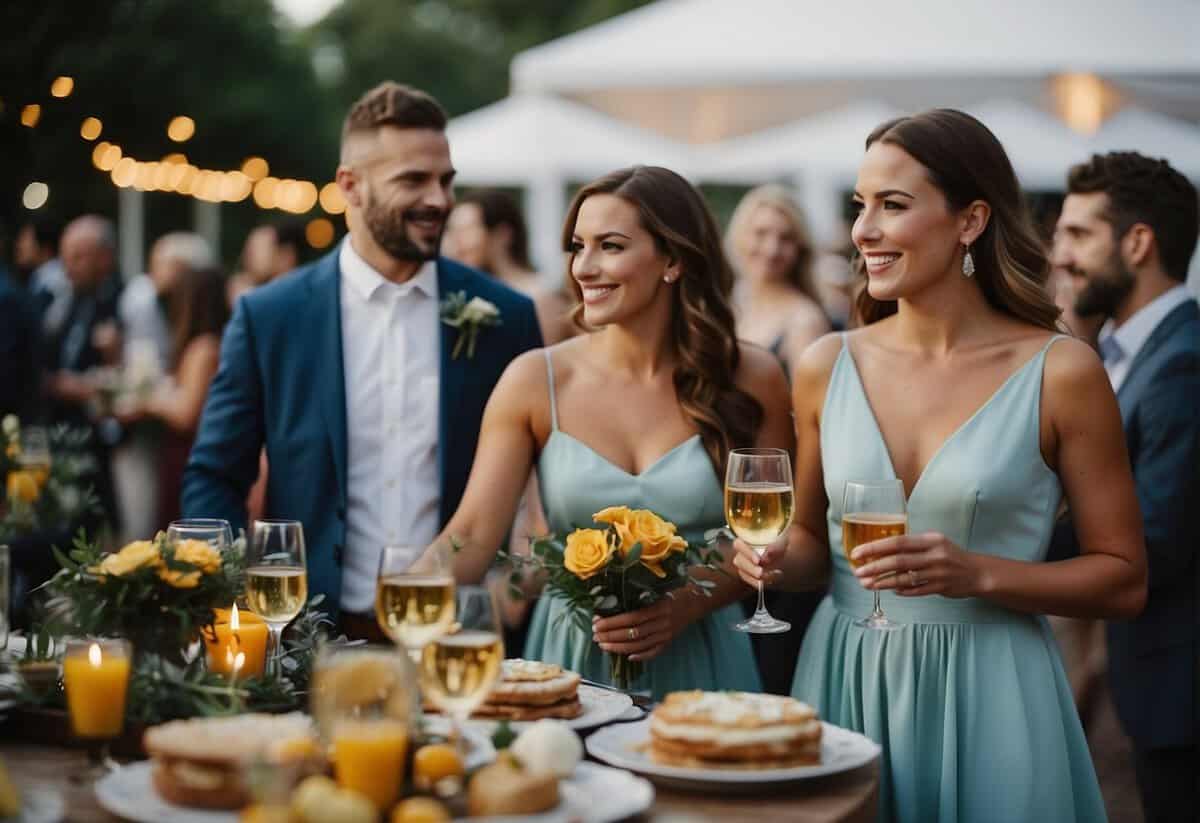
The transition from your ceremony to the reception captures the essence of celebration, starting with the cocktail hour and unfolding into an evening filled with dining, toasting, and dancing. Each phase of the reception adds its own flair to the collective joy of your special day.
Cocktail Hour to Dinner
After saying “I do,” your guests will typically be welcomed to the cocktail hour where they can enjoy a selection of drinks and appetizers while they mingle. This lively interval sets a convivial tone and often lasts about an hour, giving you time for post-ceremony photographs. Transitioning into dinner, guests find their seats and prepare for a delectable meal, whether it’s a buffet, family-style, or a plated service.
Speeches and Dances
Once everyone is settled, the reception space resonates with warmth and affection as speeches commence. Typically, the best man, maid of honor, and parents share heartfelt messages. Following the toasts, you and your partner will take center stage for the first dance, a momentous and intimate highlight. As the music swells, the dance floor opens up for guests to join in the celebration.
Party and Send-Off
It’s time to let loose! The band or DJ will curate a playlist that keeps everyone moving. In between songs, guests might be treated to the cake cutting and a dessert spread. As the party winds down, the grand exit is the final touch—an opportunity for your loved ones to send you off in style, be it with sparklers or a festive procession to the after-party.
Frequently Asked Questions
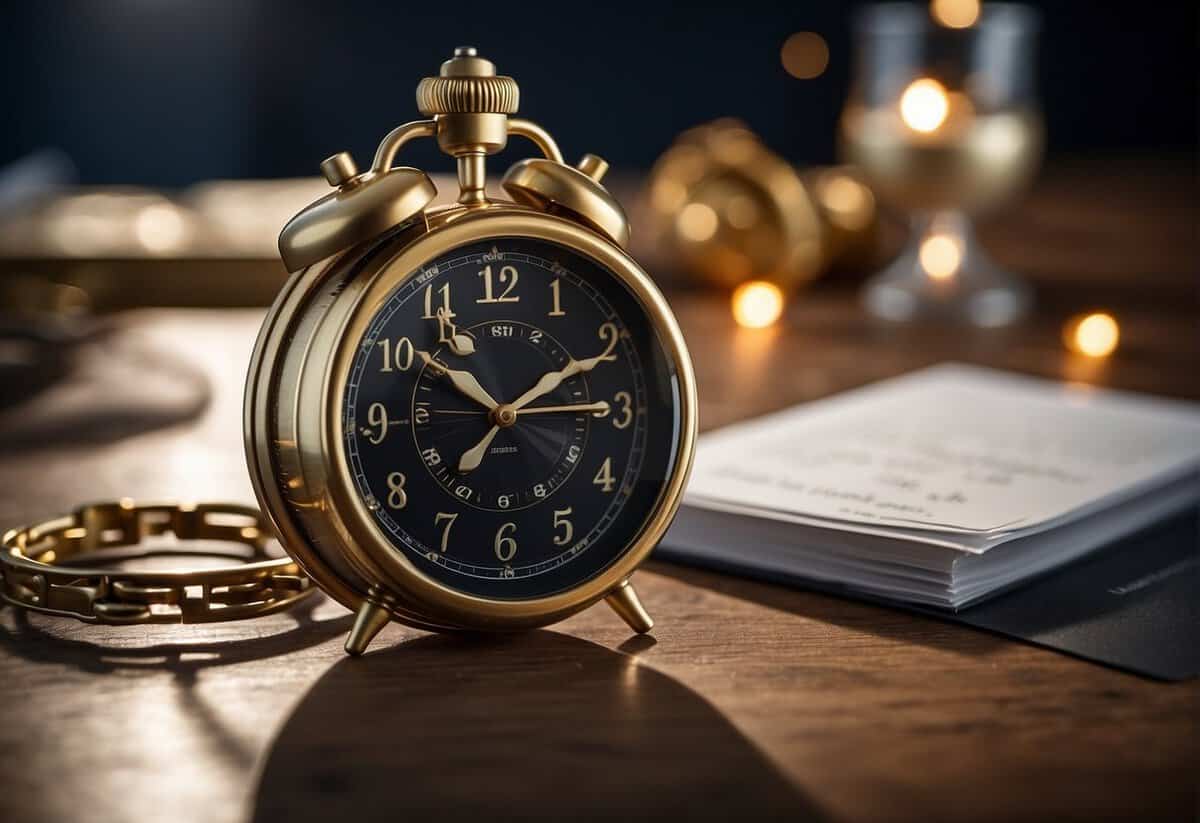
Your wedding is a momentous occasion, and choosing the right start time is crucial. Let’s explore the common timings and suggestions for scheduling your ceremony.
What time do couples typically schedule their wedding ceremony to begin?
Most couples schedule their wedding ceremonies to start between 3 PM and 5 PM. The late afternoon is favored for its soft lighting conducive to beautiful photography and comfortable temperatures.
Can you suggest the ideal start time for a Saturday wedding celebration?
For a Saturday wedding, an ideal start time can be around 4 PM. This allows your guests to arrive without rushing and enjoy the ceremony with ample time for evening festivities.
What are some popular time slots for weddings throughout the year?
During warmer months, late afternoon ceremonies are popular, while winter weddings often start earlier in the day, around 1 PM or 2 PM, to take advantage of natural daylight.
How do seasonal changes affect the preferred start times for weddings?
Seasonal changes significantly impact start times; summer weddings often start later to avoid the heat, while winter weddings start earlier to use the daytime light and warmth.
Could you outline a general wedding day timeline for an afternoon ceremony?
For an afternoon ceremony, you might start at 3 PM, followed by a cocktail hour at 4 PM, and transition into the reception by 5 PM or 6 PM.
Is there a particular time considered lucky or auspicious to tie the knot?
Some cultures consider certain times lucky for weddings. For example, choosing an hour when the hands of the clock are ascending (from half-past the hour to the top of the hour) is often thought to bring positive energy to the ceremony.
